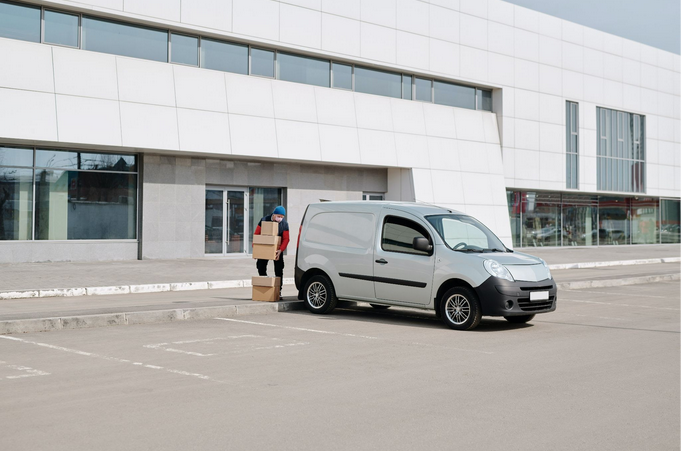 Miya Bholat
Miya Bholat
October 01, 2021
How To Use Fleet Vehicle Maintenance App To Replace Your Delivery Fleet
Proper maintenance and fleet management mean your vehicles will be able to run smoothly for a long time. Otherwise, small repairs can exclude the vehicle from rotation for a day or two, while larger breakages can put it out for a longer period of time. And as you know, vehicle downtime causes late deliveries, and unsatisfied customers, so you should do whatever you can to minimize the downtime.
Delivery fleets have gone through a lot of miles since the pandemic started. They’re driving more than usual, which means you need to look at your maintenance procedures and update them to ensure your vehicles are in proper condition, and that your drivers are safe at work.
We talked about reactive maintenance recently, and we thought it would be a good idea to show you what are some signs that your delivery fleet needs replacing. This way, you’ll stay on top of every vehicle, making sure they’re safe to drive, and you’ll avoid potential fatal breakage.
Vehicles Travelled More than 100,000 Miles or Kilometers
Before we jump into what you can do to reduce reactive maintenance we should explore why you should even work to reduce it.
Reactive Maintenance Is Costly
The data for annual distance travelled by delivery fleets varies, however some estimates say that a van travels around 15 to 18 thousand miles, or 25 to 30 thousand kilometers per year. Once you’ve reached a certain distance, like this 100,000 mile/kilometer mark, your delivery vehicle will require more maintenance work - preventative as well as reactive.
After a while, your engine won’t be as efficient anymore, and your fuel costs will also ramp up.
So, instead of making your operational costs higher, it’s best that you get a new vehicle. Although the initial cost of a new vehicle is significantly higher than the repair cost, investing in a new delivery vehicle will save you money on operational costs caused by breakdowns and downtime.
Breakdowns are Becoming More Frequent
Large delivery operations usually have a maintenance department that works in-house, and is there to cut on downtime in case of a breakage. However, if you’re a small company, you’re probably outsourcing this process, so your breakdowns could be very inconvenient, time-consuming and costly.
It’s not feasible that every single fleet has an in-house maintenance team, but a fleet vehicle maintenance app is affordable and can be a great ally in fleet maintenance procedures. It allows you to track maintenance logs, and the data can help you improve maintenance forecasts.
While older vehicles do tend to break down more easily, if you use vehicle maintenance software to manage their repairs, you can expect to prolong their life. However, you won’t be able to stop breakdowns until you get a new vehicle.
The Vehicle Has Been With You for a While
New vehicles usually come with warranties that cover most of your repairs over the years. However, warranties aren’t forever, and once they expire you’ll need to pay for repairs, defects, as well as regularly scheduled maintenance.
This is not to say that you should be switching to new vehicles each time your warranties expire, but you should be more mindful about the repairs and what’s happening in your fleet.
Again, using a vehicle maintenance software can help you track breakages, predict new ones, and analyze the spending on each of your vehicles.
Outdated Technology
New cars, vans and trucks have innovative technology and features that make them easier and safer to drive. When you refresh your fleet, your vehicles will be equipped with the latest technology, including different monitoring systems and alerts.
These upgrades will keep you in the loop for preventative maintenance and ensure your fleet runs smoothly for a long time.
However, you shouldn’t get a vehicle just because it has the latest technology. Do your research and look for vehicles that suit your company’s needs the best. This way you’ll avoid unnecessary costs, while still ensuring your drivers and vehicles are safe.
Your Drivers Don’t Feel Safe Driving the Vehicle
If you notice that your drivers are hesitant about driving a specific vehicle in the fleet, it might be time to take a closer look at it. We do recommend that you nurture an honest relationship with the drivers so you can find out about the issues on time. Unfortunately, some people might not feel comfortable voicing their concerns directly, so make sure you keep an eye on the subtle signs.
If you have a fleeing that a vehicle needs replacing, make sure you meet with the driver and ask if they’ve noticed any issues with the vehicle recently. Keep an open mind, and show the driver that they’re in a safe space, and that the issues aren’t their fault.
Final Thoughts
Upgrading your fleet is a big expense that requires careful planning. You might be put off by the initial cost, but you should look back and see how much money you’ve spent fixing an outdated vehicle.
Newer fleet means less maintenance expenses, safer drivers, less breakdowns and overall more uptime on all your vehicles. This means your deliveries will be timely, customers will be happy, and your business will bloom.
With your fleet vehicle maintenance app, you’ll be able to track some of the points we mentioned without wasting tons of time on constantly reviewing the fleet.
In the end, if you’re having second thoughts about a vehicle, take it to a trusted mechanic who will be able to give you the best advice when it comes to the replacement timeline.
